This is recorded in Han Chinese Art from historical times.
Particularly significant to the culture of these people are three animals; Muntiacus Reevesi, Reeve's Muntjac, Neofelis Nebulosa the Clouded Leopard, and Deinagkistrodon acutus, the 'hundred pace viper'. Pelts and horns of Reeves Muntjac and Clouded Leopard are worn; although the Clouded Leopard is now extinct in Taiwan. The viper is a common motif in their ornament.
Bunun
https://en.wikipedia.org/wiki/Bunun_people
https://www.dmtip.gov.tw/web/en/page/detail?nid=6
Historically the Bunun were also called Vonum, or 布農 in Chinese. They number about 60,000 and are the fourth most numerous group of Indigenous Taiwanese. The Bunun originally inhabited the western plains, but moved to the highlands as a result of conflicts with the Pingpu and Han Chinese settlers, and in the past were feared as fierce warriors and headhunters. The Bunun, like the Miao and other peoples in China, believe that there was once more than one sun. The Bunun shot down the second sun, which became the moon, and since then their cultural rituals have revolved around the phases of the moon. The Bunun live in central Taiwan, south of the Atayal and west of the Amis.
The Bunun men's costume is somewhat intermediate between north and south. Some Bunun men wear the woven tunic with the chest cover, as the men in the north do.
Other men wear the short embroidered jacket more typical of the Rukai and Paiwan. I would assume these live further south. They may be heavily embroidered with cross stitch in the manner of the Rukai, but less richly.
Women wear a long skirt, a long top with two panels that hang front and back, possibly borrowed from the Han Chinese, and a sort of diadem over a head kerchief. The robe often has cross stitch embroidery, similar to that of the Rukai.
Just a few more images.
https://en.wikipedia.org/wiki/Rukai_people
https://www.dmtip.gov.tw/web/en/page/detail?nid=10
The Rukai , or Tsalisen, self designation Ngudradrekai. 魯凱族 in Chinese, number about 13,000, thus being the 7th largest of the peoples of Taiwan. They speak a distinct language, but were formerly considered to be part of the Paiwan, with whom they share much in the way of costume and culture. The Rukai live in the highlands north of the Paiwan, and south of the Bunun. The Rukai have a rather feudal societal structure. All of the land belongs to the aristocracy, and commoners have to pay the Lord a part of their harvest in exchange for the use of the land. Woodworking is well developed.
Paiwan
https://en.wikipedia.org/wiki/Paiwan_people
https://www.dmtip.gov.tw/web/en/page/detail?nid=8
The Paiwan, 排灣 in Chinese, number about 100,000, thus being the second largest people of Taiwan. They inhabit the south of the island. They also revere the Clouded Leopard and the hundred pace viper. One of the commonest motifs used in their ornament is a pair of vipers. Paiwan culture is based on aristocracy, like the Rukai. The Paiwan named themselves after the mountain which originated them, according to myth. The Paiwan are comprised of several different tribes. They believe that the supernatural plane parallels this one, and influences what happens here.
The costume of the Paiwan is very close to that of the Rukai. It is often difficult to distinguish the two. However, where the Rukai use embroidery, the Paiwan often use beadwork or patchwork.
Puyuma
https://en.wikipedia.org/wiki/Puyuma_people
https://www.dmtip.gov.tw/web/en/page/detail?nid=9
The Puyuma, also called Pinuyumayan, Peinan, Beinan, Piumachok, or 卑南族 in Chinese. They number about 10,000, and are the sixth most numerous people of Taiwan. The Puyuma have a clan based social system. Because of similarities in culture, they were originally classed as Paiwan, but they speak a very distinctive language. Like all of the native Taiwanese, their major crop is millet. They live between the Amis and the Paiwan on the southeast coast of the island.

Some men wear a vest patterned like the chaps with more modern clothes. I am not sure if this is a modernization of the costume, or if it was a traditional prerogative of chiefs and important individuals.
Women wear a jacket similar to the Amis, or a white blouse with the chest cover. This is often accompanied with a skirt of bought material, flowered print or Chinese weave. Older photos show a wrap skirt with a patchwork design similar to the men's chaps and vest, or a woven design.
Some more images.
Yami or Tao
https://en.wikipedia.org/wiki/Yami_people
https://www.dmtip.gov.tw/web/en/page/detail?nid=12
The Yami are not properly a Taiwanese tribe. They are also called Tao, and number about 5000. They inhabit Orchid Island off the southwestern coast. Their language and culture are closer to that of the Philippines; it is thought that they migrated from Batan some 800 years ago. They are a maritime people, and live on fish, taro and yams, rather than millet. The close connection with the sea is like that of the rest of the Malayo-Polynesian peoples.
The Yami costume is very simple, for the men consisting of a breechcloth, and perhaps a vest. Metal helmets of a distinctive shape are also worn. Cloth is woven in simple designs of blue and white.
Women wear breast covers, vests, wrap skirts of the same blue and white cloth, as well as elaborate necklaces for formal occasions.
Their boats are a very significant part of their culture.
This concludes my survey of the costumes of the Indigenous Peoples of Taiwan. I hope that you have found this to be interesting and informative. Perhaps you could adapt some of the embroidery, weaving or beadwork designs to a project for your own home.
Roman K
email: rkozakand@aol.com
Source Material:
https://www.dmtip.gov.tw/web/en/index
Wei Te Wen, 'Culture of Clothing among Taiwan Aborigines', Taipei, 1998
CHEN GUO QIANG, 'Taiwan Gaoshan the original textile', 2014

























































































































































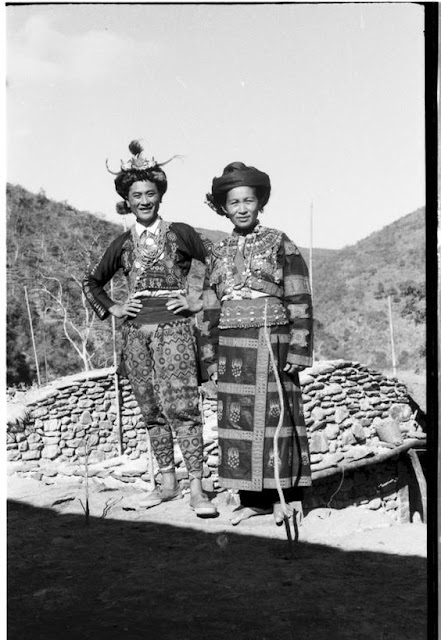










































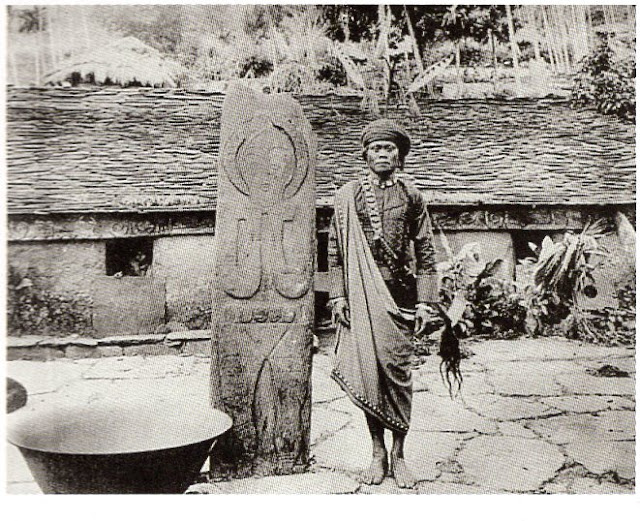







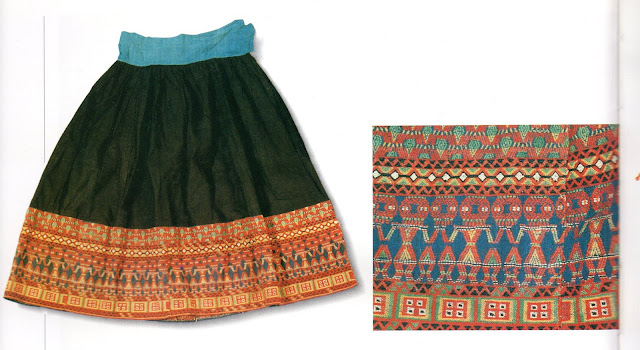
































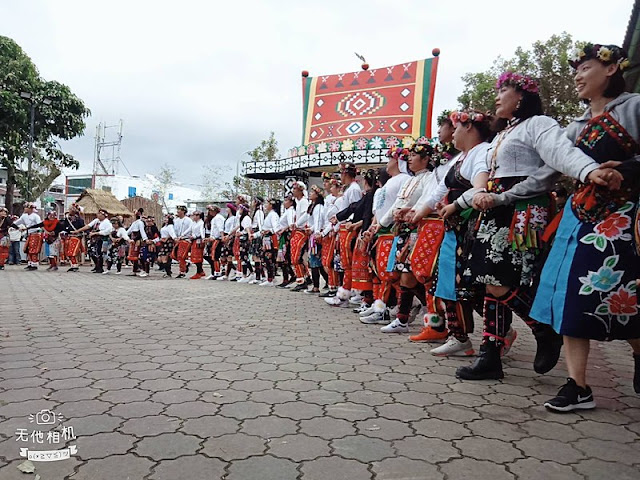
































































































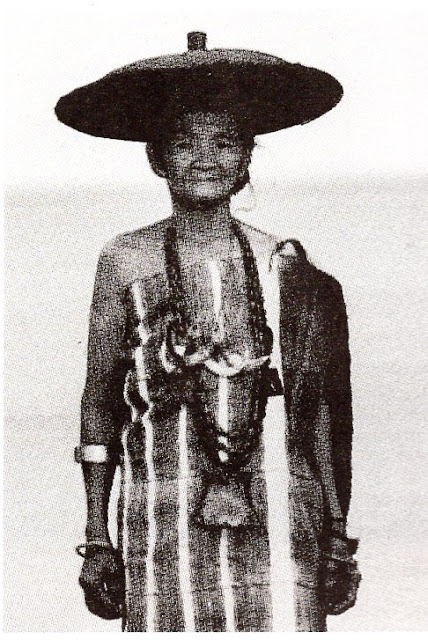








Huyuyuyuyyu
ReplyDeleteThis is really helpful post, very informative there is no doubt about it.
ReplyDeleteI found this one pretty fascinating.
ReplyDeleteThese type of articles keeps the users interest in the website.
ReplyDeleteI found this one pretty fascinating and it should go into my collection.
ReplyDeleteI am Impressed. Please keep going to write more content…
ReplyDeleteBefore Commenting, I wanna say thank you for providing this great information.
ReplyDeleteYes, this is very helpful and thanks for going to the expense of time and energy to research and record this. It is most fantastical!
ReplyDeleteWhat a fantastic cultural topic to conclude the series! I immensely admire the richness and splendor in the costumes of the southern peoples, especially the unique gathered skirts worn by the Paiwan and Rukai men. The intricacy in using appliqué, beadwork, and embroidery shows meticulousness and pride in their heritage.
ReplyDelete